
Clusters of stripes and swirling patterns on umbrellas resting on the beaches amidst the tall trunks of the coconut trees; arching leaves lightly swayed by the mere presence of the breeze in the heat and humid blaze of the sun.
It is a picture beach lovers are familiar with, and it is the image that would come to mind when one speaks of Danang.
Relatively low in the spotlight for years, this coastal town of Vietnam has sprung to fame over the last few years, thanks to the avid promotions by airlines and tour agencies which gave a jolt to the number of visitors arriving in the subdued location.
When I had the chance to visit Danang however, I took on a different route, away from the much-publicized coastal beaches and instead, explored their offerings of their local landmarks.

It is not that I do not like beaches, or the sea, but it was still quite a rewarding experience, seeing the other side of Danang.
(Time constraint played a tiny role as well, but it aligned with my usual non-conforming and off-the-beaten path style)
Beaches are not the only ones Danang are famous for; a little down south is the other treasure guarded by the coastal town.
Limestone mountains and caves.
Marble Mountains; a name proudly worn on the sleeves of Danang city, encompass a cluster of five limestone and marble hills stretched over the coastal side of the southern side of the city.
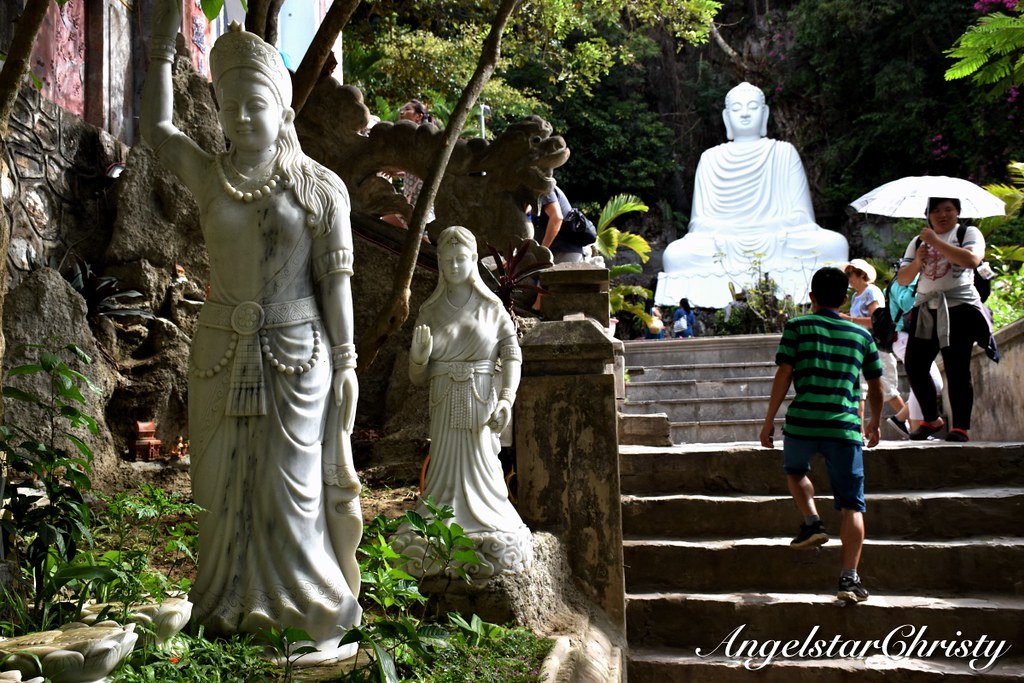
Interestingly, the five mountains are named and take on the five elements; Thuy Son (Water), Kim Son (Metal), Hoa Son (Fire), Moc Son (Wood) and Tho Son (Earth).
However, not all the mountains are accessible though, and one of the most famous; or rather, most visited and well-designed one is Thuy Son.
It is also the only one that is accessible to visitors.

The largest of them all; Thuy Son has visitors flocking to its inner chambers within the marbled rocks, admiring the beauty of its natural landscape.
It has also become a religious sanctuary and is home to a number of Buddhist and Hindu statues, making it a renowned pilgrimage spots to the devotees.



The Ong Chon gate is the main entrance; permitting one to access the world of Thuy Son.
Xa Loi Pagoda is a tall stone tower overlooking the coast, and there are viewpoints on this side offering the panoramic view of the China beach.




It was quite an expedition to Thuy Son; walking on rocky paths and climbing steep flights of stone-carved steps all the way.

Thanks to the shady trees and also the naturally cool properties of the marble and limestone mountains, it was not too bad though the heat and humidity is something to be battled with well-ventilated clothing, water to hydrate and fanning oneself along the way.
Though physically challenging, it is the mountains' way to test you before revealing its gems and that is rewarding enough for the climb.

Linh Ngam cave beckons with a small Buddhist altar in its welcoming space confined within the shape of a tall chimney.

A stone's throw away is Hoa Nghiem, housing another Buddha statue within its sheer depth.
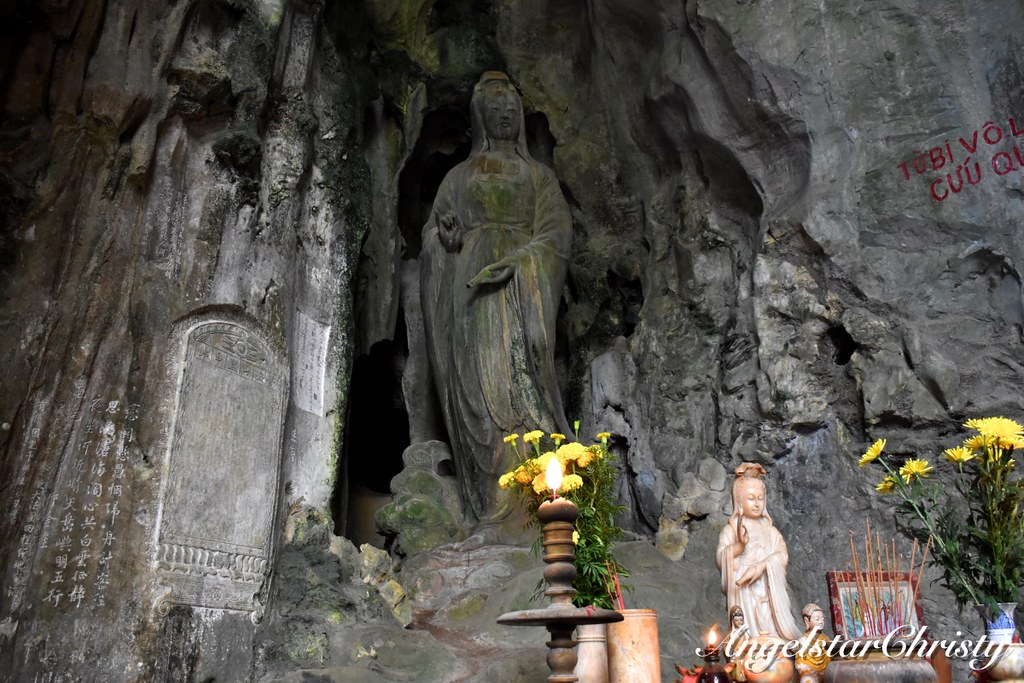
Passing through the earlier two shallow caves leads to Huyen Khong, the largest cave of them all, welcoming with its spacious and well-lit grounds, helmed with guardian statues at the opening of the cave.


A big Buddha statue sits on top of the cave, visible as one walks into the entrance, and lit candles and the fragrant aroma of fresh flowers offering at the shrines and altar fill the space.
The shrines are homages to both Buddhism and Confucianism, with notably word inscriptions found on the limestone walls.

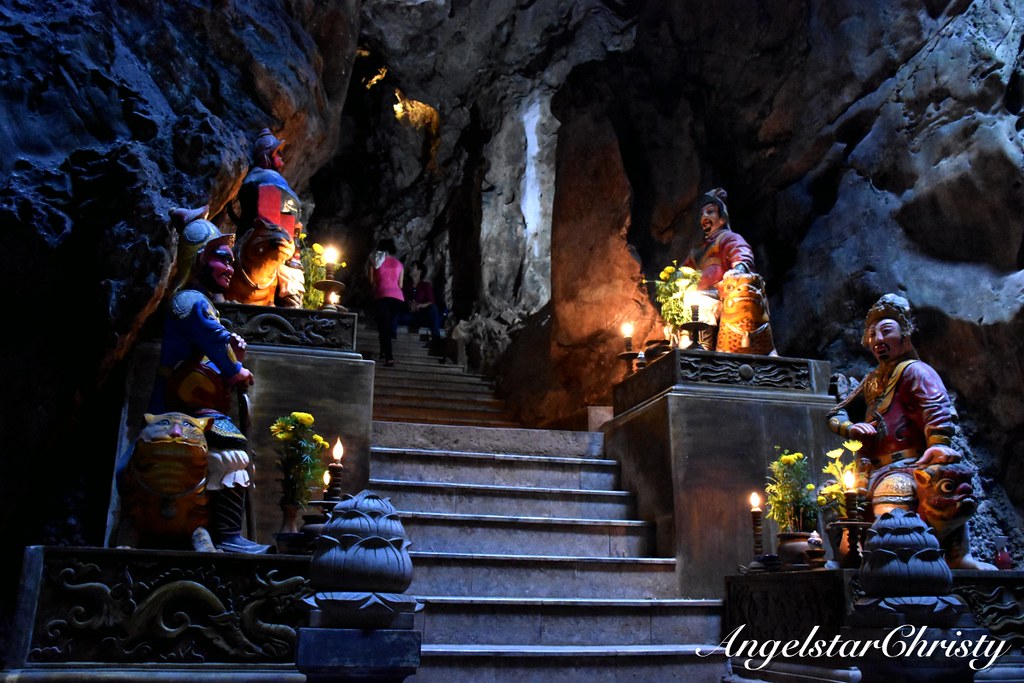

The mountains and caves are not only holding the religious alms as it reveals its other secret, well-sealed within its chambers dating to the years during the war.
The right side of the cave leads to a chamber which was once the infirmary, or rather, a hospital and nursing base for the Vietcong, which is technically within a short distance from the American air field back then.
It was strategically located considering the nearby air facilities of the American military base that time, which is just right within the Marble Mountains.
Nature definitely has its way, concealing the stories and creating that paths to intertwine with history's course.

My few hours here left me not just in sweat, but rather in awe of the many secrets that lie within the mountains and caves.


I have always loved limestone caves and I believed they always held more secrets and mysteries than we could ever imagine.
It all lies in the cold walls, where the heart and inner warmth of the personality truly is.
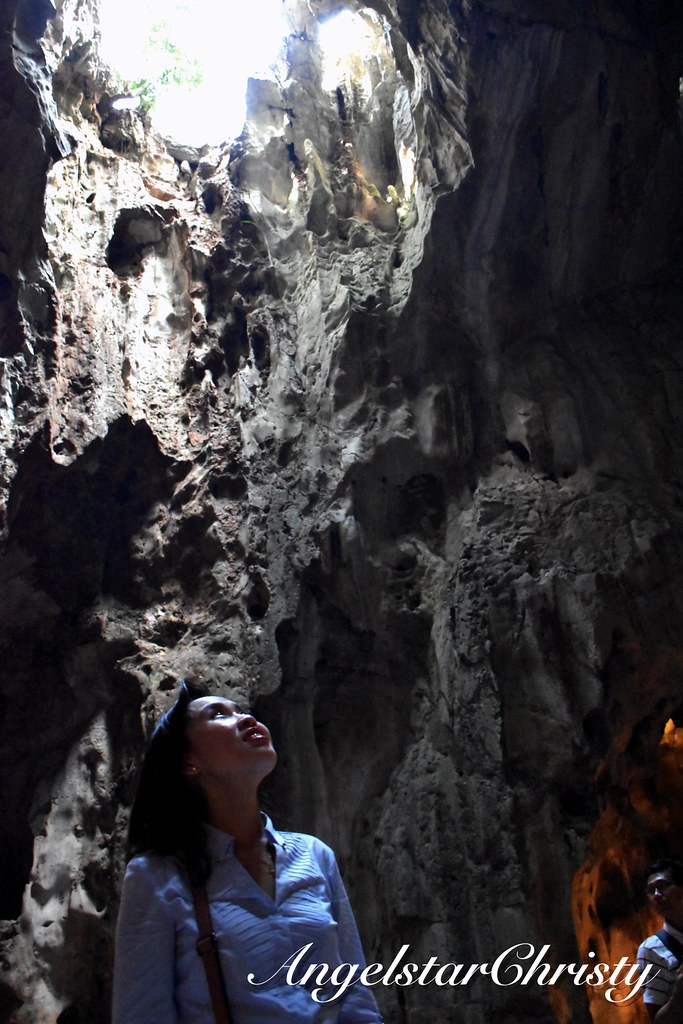

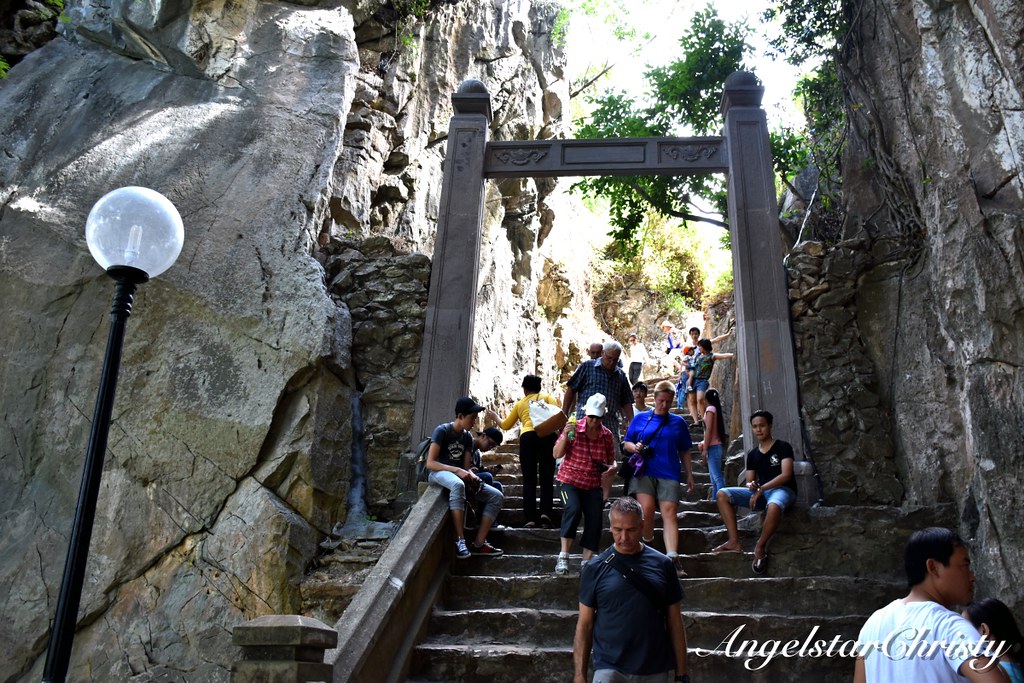
Interesting Note:
There are many marble statues and even stalls or shops nearby selling the marble items.
Interestingly, some of the marble involved in the trade are imported from China as the locals refrain from taking them off their local marble mountains in a step towards conservation.
Tips:
1. Be prepared to spend approximately 2-3 hours (or more) here at the Marble Mountains.
2. Wear comfortable and loose clothings, and proper footwear as there are lots of steps to climb and some of the parts leading into and out of the caves could be slightly steep.
3. Carry and secure your belongings, especially those that tend to fall off easily, to avoid them being obstacles while exploring the caves and making through the steps.
Best to keep your hand carry items to a minimum.
4. Carry bottled water and miniature fans or anything to fan as the local weather could be rather hot and humid, especially if you are not used to the Southeast Asian tropical climate.
5. Be respectful and mindful when inside the caves where the religious statues and grottoes are, and maintain silence at all times in consideration for the worshippers.
You do not have to agree with me.
Art Direction and Photography Styling by Me.
Photos/Videos all belong to me and are copyrighted.
Please kindly ask for permission if you need to use any of my images.
Check out my Pinterest @Angelstarc
Follow me on my live updates on my life, happening on SNAPCHAT @angelstarchrist



0 comments